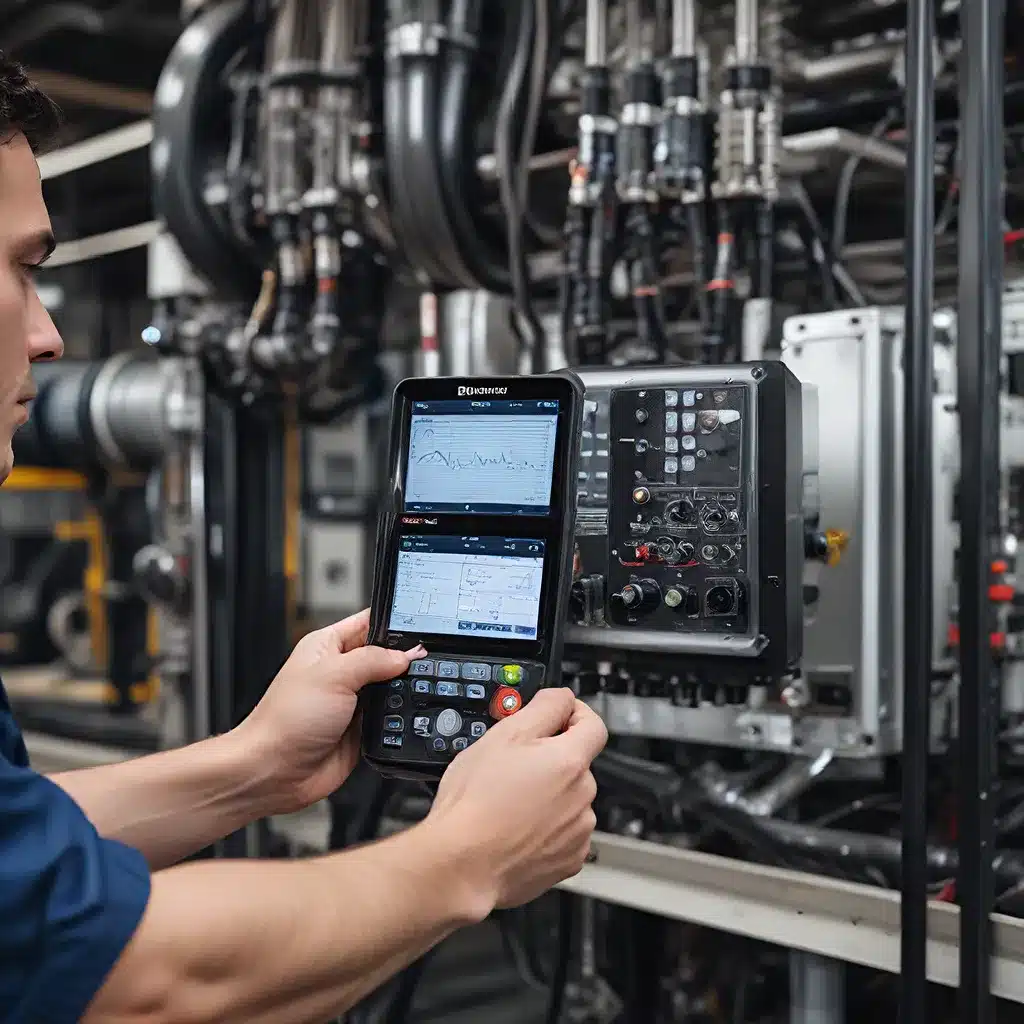
The Industrial Internet of Things (IIoT) has ushered in a new era of manufacturing, where sensor networks and data-driven insights are transforming traditional production processes. At the heart of this revolution is the ability to conduct predictive maintenance through condition monitoring, enabling organizations to optimize equipment performance, reduce downtime, and enhance overall operational efficiency.
The Rise of Sensor-Driven Condition Monitoring
In the past, manufacturers often relied on reactive maintenance, where equipment was repaired or replaced only after a failure occurred. This approach was not only costly but also disruptive, as unplanned downtime could result in significant production losses and delays. The advent of IIoT has paved the way for a more proactive and data-driven approach to maintenance.
Sensor networks installed throughout a facility can continuously monitor the condition of critical equipment, such as motors, pumps, and compressors. These sensors collect real-time data on parameters like vibration, temperature, and pressure, providing valuable insights into the health and performance of the assets.
By analyzing this sensor data using advanced analytics and machine learning algorithms, organizations can detect early signs of equipment degradation or impending failures. This enables them to proactively schedule maintenance activities, effectively reducing the risk of unplanned downtime and maximizing the useful life of their assets.
The Impact of Sensor-Driven Condition Monitoring
The adoption of sensor-driven condition monitoring has had a profound impact on the manufacturing industry, delivering tangible benefits across various fronts:
Improved Efficiency and Productivity
IoT technologies allow manufacturers to monitor the performance and health of their equipment in real-time, enabling them to identify and address issues before they escalate into larger problems. This proactive approach minimizes downtime, resulting in increased productivity and efficiency on the factory floor.
Enhanced Product Quality and Safety
Sensor-based condition monitoring not only helps maintain equipment but also ensures product quality and workplace safety. By monitoring critical parameters like vibration, temperature, and pressure, manufacturers can detect and resolve potential quality issues or safety hazards before they manifest.
Optimized Resource Management
Sensor networks provide valuable data on energy consumption, resource utilization, and environmental factors, allowing organizations to optimize their resource management strategies. This, in turn, leads to cost savings and supports sustainability efforts.
Data-Driven Decision Making
The wealth of data generated by sensor networks empowers manufacturers to make more informed, data-driven decisions regarding maintenance, operations, and strategic planning. This data-driven approach enables organizations to anticipate and respond to changing market demands and industry trends more effectively.
Enabling Technologies for Sensor-Driven Condition Monitoring
The success of sensor-driven condition monitoring in the IIoT ecosystem is underpinned by a range of enabling technologies, each playing a crucial role in unlocking its full potential.
Sensors and Instrumentation
At the core of condition monitoring are the sensors installed throughout the facility, which continuously gather data on the performance and health of equipment. These sensors can measure a wide range of parameters, including vibration, temperature, pressure, and flow, providing a comprehensive view of the asset’s condition.
Connectivity and Communication Protocols
The sensor data collected must be transmitted to a central monitoring system for analysis. This is facilitated by communication protocols, such as wireless sensor network technologies, industrial Ethernet, and cellular networks, ensuring reliable and secure data transfer.
Data Analytics and Machine Learning
The raw sensor data is then processed and analyzed using advanced analytics and machine learning algorithms. These tools can detect patterns, identify anomalies, and predict future equipment performance, enabling predictive maintenance strategies.
Edge Computing and Cloud Infrastructure
The computing infrastructure supporting sensor-driven condition monitoring can take various forms, from edge devices that perform local data processing to cloud-based platforms that provide scalable storage and computing power for more complex analytics.
Visualization and Reporting
To make the most of the sensor data, organizations require intuitive visualization and reporting tools that transform the insights into actionable information for maintenance teams, plant managers, and other key stakeholders.
Addressing Security and Privacy Concerns
As sensor networks and IIoT technologies become increasingly prevalent in manufacturing, the importance of cybersecurity and data privacy cannot be overstated. Manufacturers must take proactive measures to safeguard their systems and protect the sensitive data collected by their sensor networks.
Some key security considerations include:
- Network Security: Implementing robust access controls, firewalls, and encryption to prevent unauthorized access and data breaches.
- Device Security: Ensuring that sensor devices and edge computing components are equipped with secure firmware and firmware updates to mitigate vulnerabilities.
- Data Security: Employing robust data encryption, access controls, and secure data storage and transmission practices to protect sensitive information.
- Regulatory Compliance: Adhering to industry-specific regulations and standards, such as the General Data Protection Regulation (GDPR), to ensure the protection of personal and sensitive data.
By addressing these security challenges, manufacturers can build trust in their sensor-driven condition monitoring systems and ensure the confidentiality, integrity, and availability of the critical data that drives their predictive maintenance strategies.
Maximizing the Benefits of Sensor-Driven Condition Monitoring
To fully capitalize on the advantages of sensor-driven condition monitoring, manufacturers must adopt a holistic approach that integrates people, processes, and technology. This includes:
-
Organizational Alignment: Fostering a culture of data-driven decision making and ensuring that maintenance teams, plant managers, and other stakeholders are aligned with the strategic objectives of the condition monitoring program.
-
Process Optimization: Reviewing and streamlining maintenance workflows to leverage the insights provided by sensor data, enabling more efficient and effective maintenance planning and execution.
-
Technology Integration: Seamlessly integrating sensor networks, analytics platforms, and other IIoT technologies to create a comprehensive, end-to-end condition monitoring solution that delivers actionable insights.
-
Continuous Improvement: Regularly reviewing and enhancing the condition monitoring program, leveraging lessons learned and incorporating new technological advancements to drive ongoing improvements in equipment performance and operational efficiency.
By embracing this holistic approach, manufacturers can unlock the full potential of sensor-driven condition monitoring and predictive maintenance, transforming their operations and positioning themselves for success in the ever-evolving landscape of the Industrial Internet of Things.